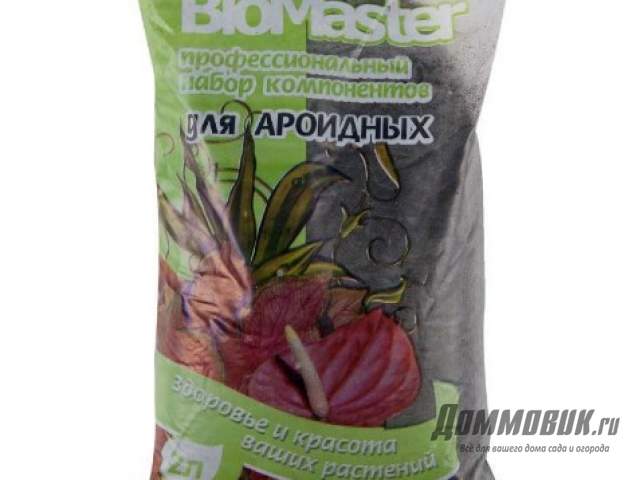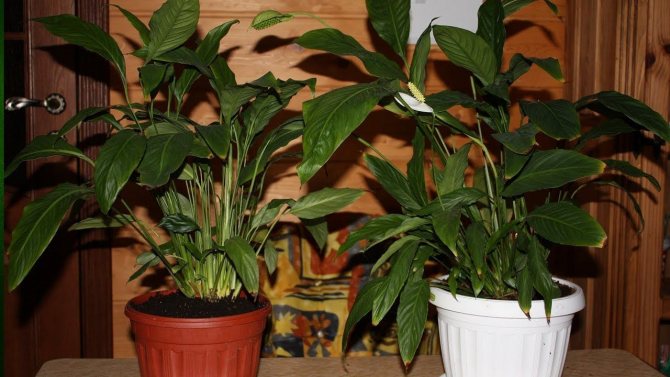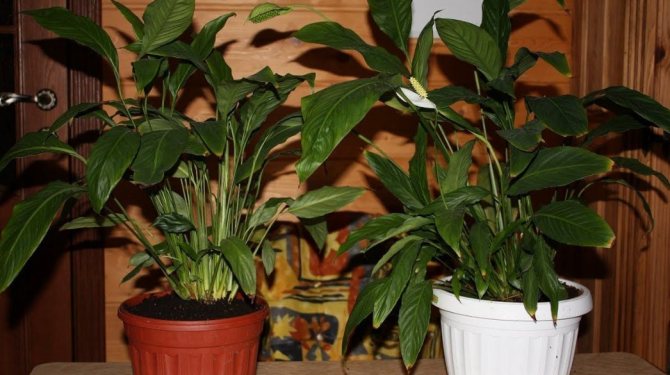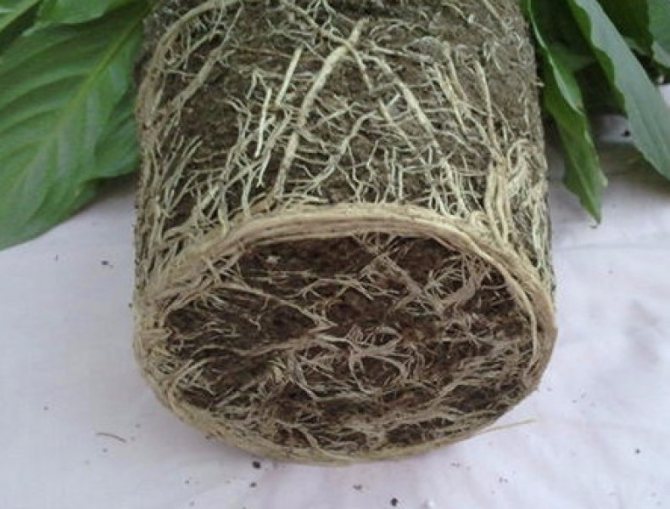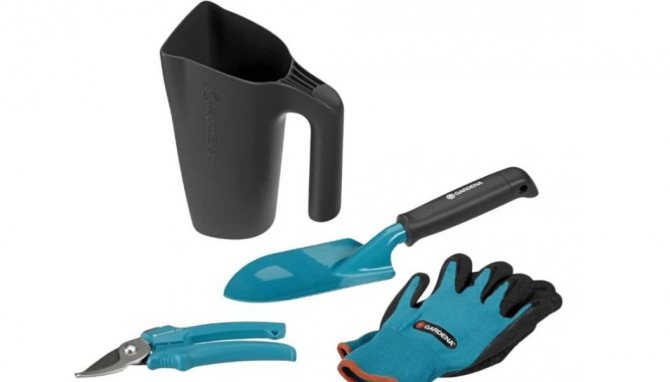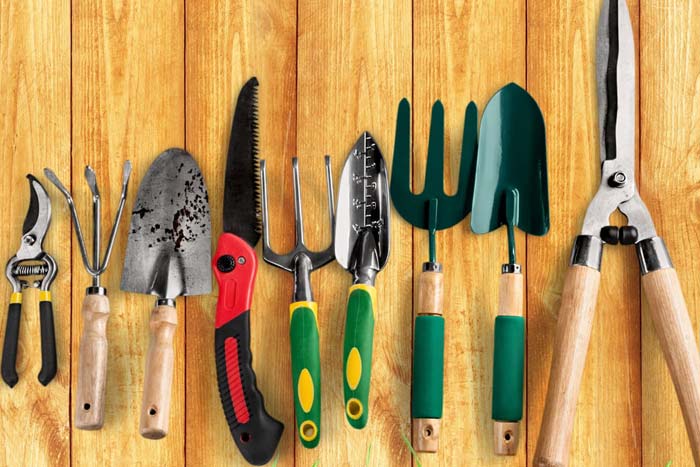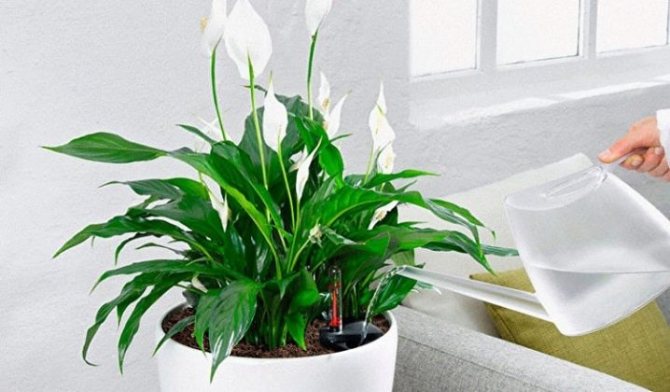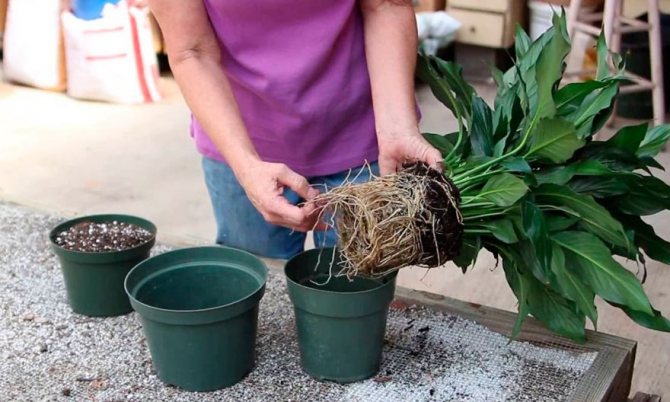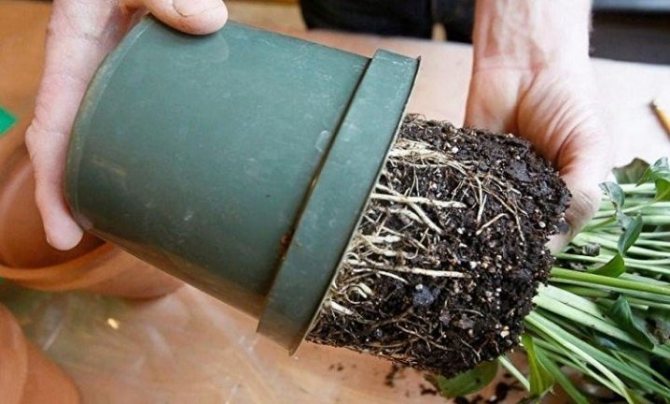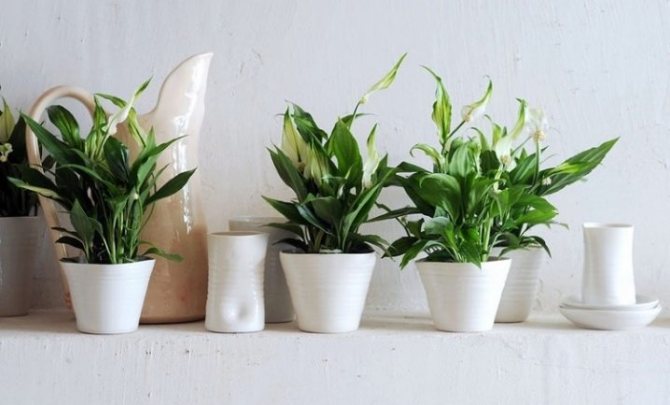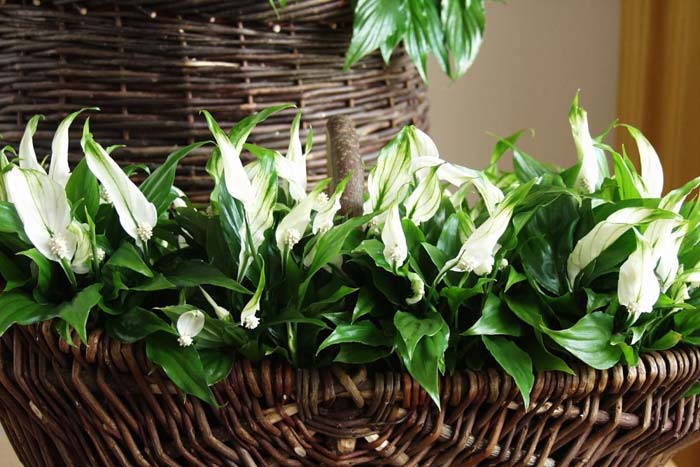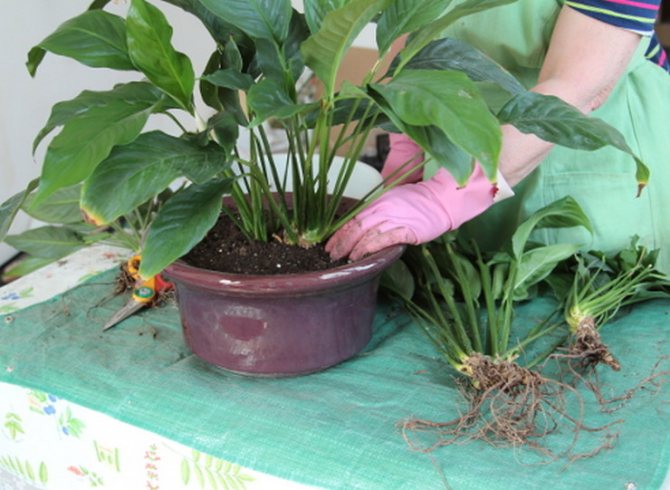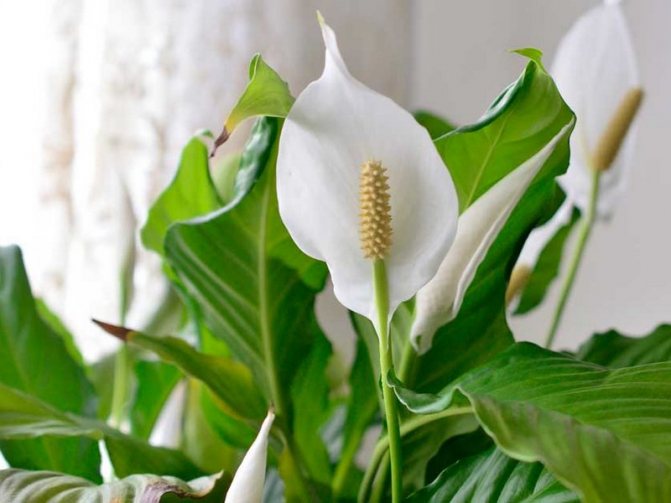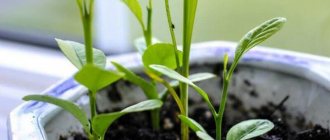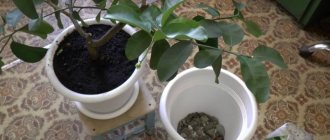Do I need to transplant spathiphyllum after purchase
Transplanting this plant after purchase is a prerequisite for keeping spathiphyllum. But you should not rush with it: experienced flower growers recommend carrying out this procedure only 2-3 weeks after purchase. This is how long it will take for a flower to get used to the new home (and the microclimate in the dwelling) at least a little bit. Moving earlier will result in additional stress for him.
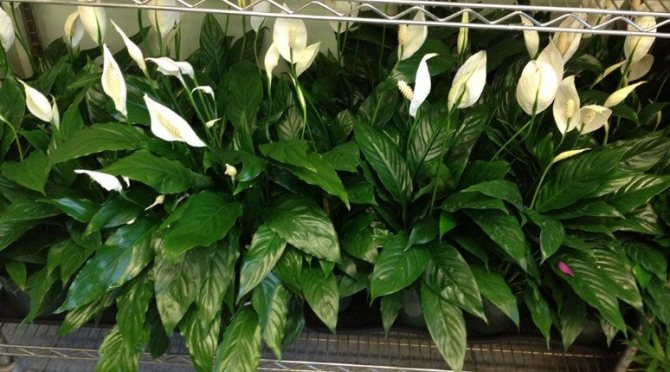
But there are exceptions to this rule. If it is noticeable that a flower is massively letting out shoots and buds right in the store, it means that you have an “age” plant in front of you that needs to be saved (including by transplanting). True, such work carries a considerable risk for spathiphyllum - it is possible that an emergency transfer will become a strong depressing factor.
Consequences of a wrong purchase
Really, an improperly selected pot can cause a loss of plant turgor, yellowing and drying of foliage, lack of flowering. In one case, the pot is too cramped. An indoor flower grows quickly if the root system is placed on the surface - this is a sure sign that the size of the flowerpot is not suitable. As a result, there is a lack of moisture, minerals, and a lack of space for further growth.
However, a pot that is too large and wide will also have a similar effect. In spathiphyllum, at first, the root system grows, which fills the entire space, and then shoots appear. And this is the reason that the exotic does not bloom and drops its leaves. When transplanting, the roots must completely fit into the new flowerpot. It is better to purchase a container 3-4 cm larger than the previous one.
Is it possible to transplant spathiphyllum during flowering
During the flowering period, transplanting is very undesirable, but still possible. Such a step is taken in case of emergency - when attacking earth and deciduous parasites or a clear loss of the useful qualities of the soil.
Important! Adult plants are cramped in the technical pots in which they are sold. Prolonged stay in such a container inhibits the growth of the rhizome, which negatively affects flowering.
The way out is the transshipment method: the plant is transferred to another pot without removing the soil coma from the roots. This method allows you to maintain a minimum balance of nutrients, which are much needed at the time of flowering.
But we repeat - a similar procedure is carried out only in an emergency. If you touch a blooming spathiphyllum for no apparent reason, the plant may react by blackening or curling the leaves. Often the reaction to the movement of a healthy flower is the absence of ovaries.
Also transplant strawberries, grapes, chrysanthemum, peony, raspberry, orchid, violet, iris, lily, money tree, and tulips.
What won't work?
After examining the above recommendations, a conclusion should be drawn. No need to buy for spatsiphyllum:
- immediately a large pot, with each transplant, the size needs to be increased;
- in a glass or wooden pot, poor development of the root system is possible, it is better to choose plastic or ceramics;
- a transparent pot or container of a dark color, which can overheat in the sun, is also not suitable;
- deep flowerpot, because the roots grow to the sides.
Thus, having learned all the preferences of the pet, you can determine and feel free to go to the store. A healthy spathiphyllum in a bright, attractive flowerpot will not leave anyone indifferent. And most importantly, a properly selected flower container will preserve the health and longevity of the plant for a long time.
If you find an error, please select a piece of text and press Ctrl + Enter.
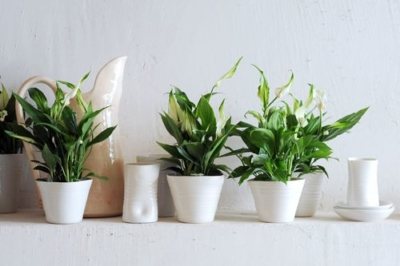

Spathiphyllum very quickly won the love of most fans of indoor plants due to the unusual shape of its inflorescences, which are distinguished by their aesthetic and rather minimalistic appearance.
But few people know that the key to a healthy and beautiful spathiphyllum lies in the correct choice of a pot for it.
We will figure out how to choose the right pot for this particular flower below.
How often do you need to replant
Usually spathiphyllum is transplanted once a year, in the spring. Another frequency is often called - at intervals of 2 or even 3 years. However, for a flower with rapidly growing roots that form a large lump in the ground, this is too long. Having "overexposed" it in a cramped pot, the owner thereby reduces the intensity of flowering. It is better to relocate young specimens once a year, and older ones every 2 years.
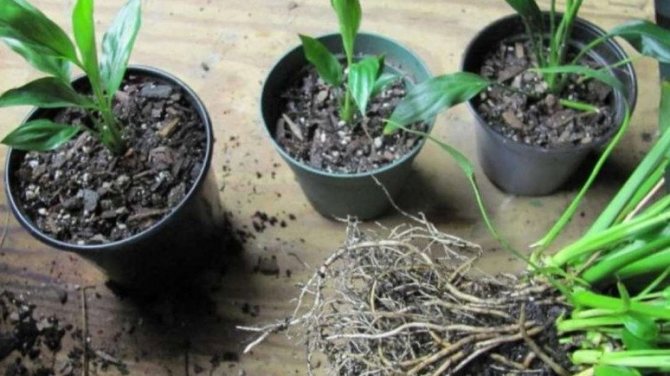

Description of the plant spathiphyllum
The bush has no stems, small leaves grow directly from the roots, forming dense green bunches. The roots are rather short. Small tubercles are visible on the stem rudiment. These are aerial roots characteristic of plants of the Aroid family. The leaf blade is oval-elongated, pointed, with a noticeable midrib.


What does a plant look like
The lateral veins are also clearly visible. Small flowers form a white ear on a long peduncle, around which, on one side, a white oval veil with a pointed tip. The name spathiphyllum reflects the specific appearance of the flower: in Greek, "spata" means a veil, and "phillum" means a leaf.
The graceful bloom of spathiphyllum lasts for several weeks, from mid-spring to July. Some varieties bloom from late March to early fall. With good care, the plant forms flowers also in the fall.
If spathiphyllum does not bloom for a long time, a transplant carried out in accordance with the correct recommendations activates the vitality of the plant. In the popular indoor culture, the dormant period begins in October and lasts until January. At this time, provide a temperature of at least 16 ° C and infrequent watering. At high air humidity, flower stalks are created in winter.
When is the best time to do it
The optimal time is the beginning of spring, even before flowering. But here, too, options are possible. For example, if later, when examining the green mass, it was found that the lower leaves began to dry out, then you will have to do a sanitary transplant.
Did you know? Unique flowers grow in Australia - orchids of the Risentella line, which bloom ... underground.
The same applies to other difficulties, such as an invasion of parasites or problems with the pot itself. The air temperature in the room is of great importance at this point. It should be within + 20 ... + 24.
Learn how to choose an orchid pot.
Transfer or transfer, the right choice
We know that transshipment is a method of changing a container without disturbing a clod of earth connected by roots. In this case, the plant is abundantly moistened, but not so much that the earth turns into mud. It is enough for it to slip out of the tight pot easily like clockwork without damaging the roots. Visually making sure that a hundred roots are healthy, leaves without signs of disease, the plant is neatly arranged in a large bowl.
At the bottom of the new container, a drainage layer of 2 cm, 2 cm of soil, and an undamaged lump of earth with roots is placed on top, having previously selected pebbles and expanded clay from the lower beard. On the sides, soil is poured for spathiphyllum, it is slightly compacted, slightly watered. When wet, the earth will settle, it must be added to the neck.Shake the pot a little, make sure that the plant does not fall over, stands in the center.
If you really need it, then you can also handle a flowering plant, but a spacious pot will create conditions for the cessation of flowering.
If the plant is newly acquired, then is it necessary and how to transplant spathiphyllum after purchase? Yes, it is, but only after preliminary quarantine for 2 weeks. The soil on which the plants for sale are grown contains a lot of peat and is filled with nutrients only for the first time. Therefore, as far as the root system allows, you need to carefully clean it from the substrate and put it in the desired composition.


Just as during transshipment, a layer of drainage and earth is prepared, roots are placed on it and carefully sprinkled with soil for spathiphyllum, with gentle shaking to compact. The sprinkled roots are moistened, the soil tightly fits the roots, the earth is again poured up to the neck. At the same time, about 2 cm should remain to the edges of the pot. The plant is checked for planting density, slightly rocking and controlling so that it does not fall over.
But such a transplant of spathiphyllum requires careful observation for 2 weeks and frequent spraying of the leaves. An airtight hood over the plant will keep moisture and promote rapid establishment.
In order to plant spathiphyllum thickets, you will need to completely immerse the plant in a container with water and let the earth turn into mobile mud. After that, extract the plant, and, spreading out on a horizontal plane, select young plants, cut the rhizomes of the old so that together with the root there are up to 5 leaves.
Plants that have a root system can be planted directly in containers. If there are no roots on the layers, they must be germinated in a glass of water. Transplanting spathiphyllum during reproduction is no different from how to transplant spathiphyllum after purchase.
In all cases of transplanting and transferring, the plants are not watered until new leaves begin to appear. This means that the plant is rooted, and moisture will not harm it, and rot will not appear.
Spathiphyllum home has long and successfully known as a beautiful houseplant, popularly called "female happiness". It can be either gigantic or dwarf in size.
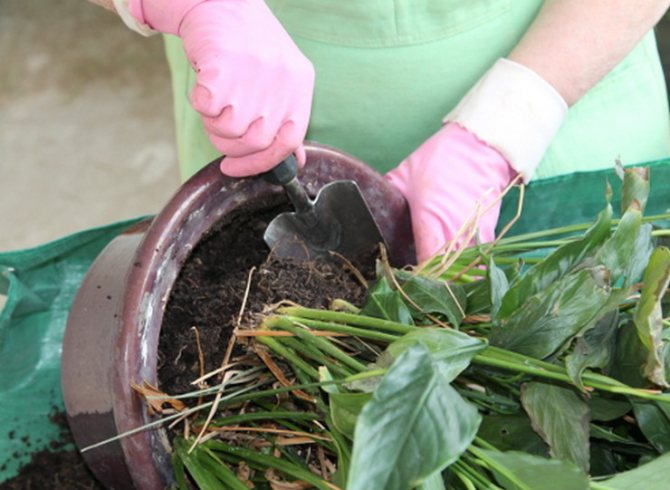

Spathiphyllum has no stems at all, so the foliage grows directly from the roots. The whole sheet has an oval shape with embossed veins. The plant periodically releases long-stemmed inflorescences.
Blooming spathiphyllum is a bit like a white calla with a yellow twig in the middle of the core. Over time, the flower takes on a greenish tint and dries up.
Flowering lasts up to a maximum of a month, most often, twice a year. Spathiphyllium deservedly took a place in the homes of flower growers, as it is absolutely unpretentious in care and surprises with its graceful appearance.
For a longer flowering period, the plant requires a lot of light. He also prefers a rather high room temperature - up to plus 32 degrees. But the cold and wind are a danger to him.
Caring for spathiphyllum at home involves fairly abundant watering during the release of the peduncle. But, it is worth considering that the flower does not tolerate stagnation of water in the pot, that is, it is reasonable to water the next watering as the top layer of the soil dries out.
In winter, it is worth cutting down on "drinking", but not allowing the substrate to completely dry out. It is recommended to regularly give the flower a cool shower and often wipe the foliage with a wet cloth. From mid-autumn until mid-winter, the plant rests.
Spathiphyllum prefers loose, fertile soil, which is best prepared on its own:
- perlite 2 parts;
- garden land 2 parts;
- peat 3 parts;
- charcoal, bark and gravel.
In order not to get dangerous rotting of the root system, it is required to lay drainage (expanded clay, pebbles) at the bottom of the flowerpot.
A young spathiphyllum is usually transplanted annually. After five years, the plant should be transplanted into a slightly larger container, when roots appear in the hole at the bottom of the pot.
It is better to choose a shallow pot for planting to avoid soil acidification even before rooting. And when transplanting, it is reasonable to take a new container of a slightly larger volume than the previous one.
It is wise to water the plant thoroughly before transplanting, then remove the side shoots. So the spathiphyllium will be larger, as can be seen from the photo.
The flower should be planted in new soil directly with the old earthen clod, then the void of the pot should be filled with a new substrate.
After the spathiphyllium is transplanted, it is not worth spilling the earth for two to three days, because this way the plant takes root better in a new place.
Florists recommend propagating a flower by dividing a large bush in the spring:
- the processes are carefully separated from the sides along with the root system, trying not to harm it;
- shoots are planted in fresh soil.
Spathiphyllium can be propagated by seeds. In practice, it has been proven that this occupation is quite time consuming and has low efficiency. In addition, it is not a fact that the desired variety of a given plant will grow.
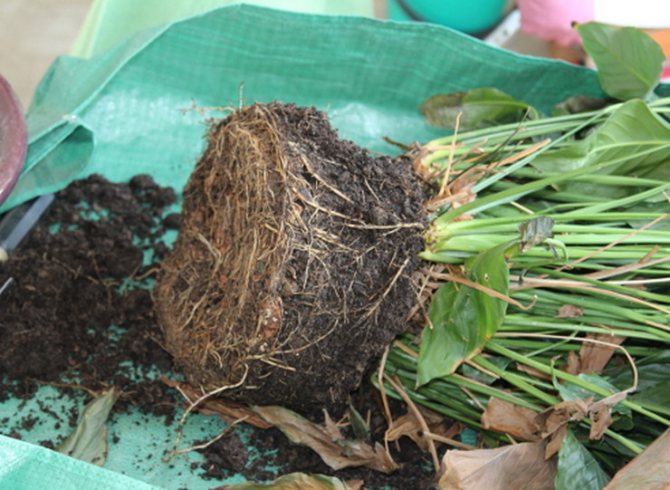

Spathiphyllium, like any other houseplant, requires regular feeding. From the beginning of spring until the beginning of autumn, it is necessary to apply mineral fertilizers once every three weeks.
When the flower retires, you should stop feeding, or, if abundant growth continues, fertilize it up to once every 30 days.
Spathiphyllium attracts pests: spider mites and aphids. In this case, it is recommended to properly rinse the foliage with a soap solution, adding nicotine sulfate to it. It is worth considering that the preparations should not fall on the soil in the pot, so it is wise to cover it with polyethylene.
The leaves of the plant often turn black, which indicates the death of the roots from excessive waterlogging of the soil. The tips of the foliage in spathiphyllium can dry out from too low an air temperature in a dry room.
The plant stops blooming with illiterate care. It is also affected by the too large volume of the pot.
Photo of spathiphyllium
Pot for spathiphyllum: selection and preparation
A new container for a flower is selected, guided by a simple rule - the pot should be slightly larger than the previous one. The fact is that a developed root system, tightly grasping the soil, actively forms an earthen lump. If you transfer spathiphyllum to a container that is too voluminous, flowering can be very delayed (until the roots are located throughout the volume). With a gradual increase in size, such difficulties do not arise, and the flower develops without unnecessary effort. For this, a container with a diameter of 10-15 cm is selected.
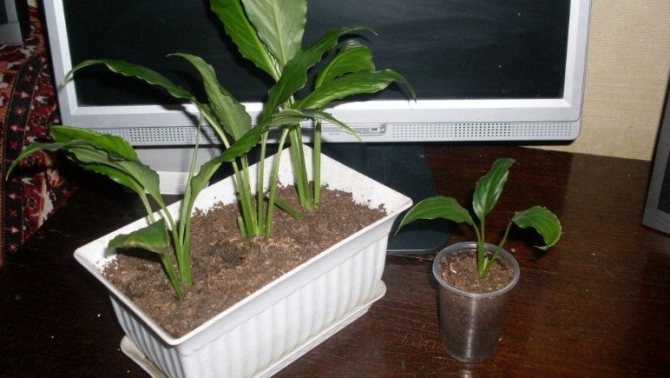

Having chosen a new pot and making sure that there is a drainage hole in it, the drainage itself is laid on the bottom. For this, large pebbles, expanded clay or brick chips, laid in a layer of 1.5-2 cm, are suitable. Practice shows that many gardeners, using clay pots, do not use drainage. This is not scary for a strong plant, but in the case of a young and still fragile specimen, it is still better to insure.
Transplanting a flowering plant
Transplanting a flowering plant is not recommended. The flowering of spathiphyllum is short and it is better to wait for the end of flowering. But if such a need arose, then first of all, all peduncles should be removed.
This is done so that the plant does not waste energy on maintaining flowering, but sends them to restore the root system. Before planting, remove old, damaged and dried leaves. Very young shoots should also be pruned.
The rest of the steps are similar to those described above.
What kind of soil is needed
Spathiphyllum will require loose and light soil with low acidity. The easiest way is to take a purchased soil mixture for flowering tropical and aroid species, adding a little coarse sand there.
Important! When buying a ready-made substrate, pay attention to the acidity - it should be less than 6.5 pH.
Many people prepare the soil on their own, and the most popular is a mixture of the following:
- peat;
- leafy and sod land;
- sand;
- sphagnum.
The first four components are taken in a ratio of 1: 1: 0.5: 0.5, and sphagnum is added very little (about 0.2) - it protects the soil from drying out. You can take another mix that provides better aeration.
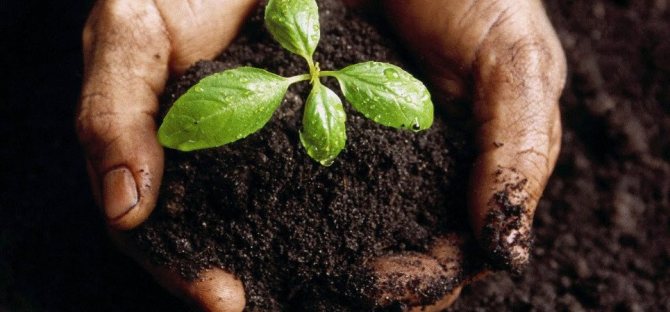

It contains:
- 2 parts of sod land;
- 1 part of sheet soil, peat and coarse sand;
- charcoal;
- brick chips;
- coarsely crushed tree bark;
- superphosphate.
The last four ingredients are additives, the total mass of which in the substrate should not exceed 10%. Another version of the soil mixture is prepared by mixing purchased soil, pine bark, vermiculite and humus. The final concentration is 5: 1: 1: 0.5. But here you need extreme accuracy: an oversight with the dosage of humus threatens with increased drying of the roots.
Grow freesia, fir, dill, rose, coriander, juniper, cloves, and eustoma in a pot.
When is the Feminine Happiness flower transplant recommended?
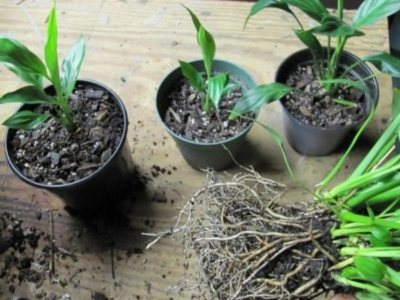

In order to correctly determine the period of transplantation of a given indoor plant, first of all, you need to pay attention to its appearance and age.
So, once every 3-6 years, the spathiphyllum plant needs a transplant.
It's important that the signal for transplanting is the presence of flowering... In the event that the plant did not bloom in due time, then the way out of the situation is the correct transplantation into a pot, larger in size with the previous one.
It is important that if you notice bulging roots of a stormy color from the soil in your pet, then you need to transplant the plant urgently, otherwise in the future this can lead to disastrous consequences.
Speaking of seasonality, experienced housewives recommend replanting the flower in the spring season.
Learn about how often you need to transplant spathiphyllum and when exactly it is better to do it, find out in this material, and about whether it is important to immediately transplant the purchased spathiphyllum, and how to do it correctly, read here.
Tools for the job
You will need a minimum of tools:
- garden shovel or scoop;
- sharp knife or scissors;
- spray.
Did you know? The first flower clock was planted nearly 300 years ago (in 1720). Swiss gardeners have become pioneers in this direction.
You will have to work with gloves (preferably rubber - wearing cotton, you can miscalculate with effort and damage the rhizome).


Possible problems
There are times when the process of renewing the soil mixture did not pass without leaving a trace and “female happiness” began to hurt.
Usually, the symptoms of the disease are reflected in the appearance of the plant:
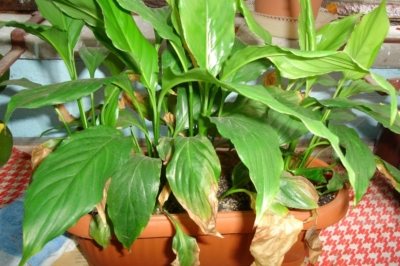

- leaves fall, the plant withers;
- the appearance of frequent small yellow spots on the platinum leaf of the flower is possible;
- black edges near foliage;
- yellowed leaf tips and top.
If such phenomena are on the face, then it's time to figure out the reasons and take measures in order to have time to prevent the death of the flower.
The process of transplanting such an indoor plant as spathiphyllum or, in other words, "female happiness" is quite painstaking and laborious. However, as practice shows, all the efforts made are definitely worth it. After this procedure the flower will grow and bloom with a vengeance.
For more information about why the spathiphyllum after transplantation dropped the leaves, turned black or yellowed and wilted, read this material.
Preparing spathiphyllum for transplant
The initial stage of transplantation is the preparation of the flower itself. In the case of spathiphyllum, it is carried out according to the following algorithm:
- The soil in an old pot is moistened abundantly, after which it is carefully pry with a garden spatula.
- The plant is removed along with the lump.
- Then the rhizome is carefully cleaned of old drainage and soil.
- Withered or too young leaves are cut off (at one time, do not torment the flower).
- Take a closer look at the old leaves, and especially at their bases - they are also removed (to prevent rotting). Usually they are cut off without much effort.
- It remains to cut out too long or rotten roots - and the spathiphyllum is ready to move to a new container.
Transfer of adult specimens is often combined with reproduction. To do this, the cleaned root ball is cut into several fragments, making sure that each section gets a healthy piece of rhizome.
Important! The cut points are sprinkled with charcoal in the form of a powder - it is a kind of antiseptic.


Keep in mind that if the transplant has not been carried out for 2-3 years, then there will be many such outlets, therefore, if there is no space for new pots, it is better to refuse dividing.
Reproduction methods
Propagated by dividing the bush, seeds and apical cuttings. Sowing with seeds is used in rare cases - to grow a new variety. There is no need to use cuttings. The plant produces many babies.
When children appear, the bush is divided into several parts. They make sure that roots and a growth point remain on each. In the absence of roots, the young plant is planted in wet sand for rooting. Small pots are used - about 9 cm.
Important! Sometimes the plant does not bloom for a long time. Why does spathiphyllum not bloom? Perhaps the plant is too young - flowers appear when they reach maturity. The first flowering begins when the root system completely fills the pot. In adult plants, the lack of flowering is associated with low temperatures, insufficient moisture, and poor soil.
How to transplant into another pot
There are no tricks here either:
- A prepared moist substrate is poured over the drainage laid in the container.
- A small depression is made in the middle of the pot.
- A leg with neatly divorced roots is placed in it.
- The hole is immediately covered with a new portion of soil, not forgetting to crush the soil near the trunk (until its level reaches the leaves).
- Immediately after transplanting, abundant watering follows. Prepare for the soil to settle slightly, and the substrate will have to be poured. This is an important point - if left out, the plant can wobble in the pot.
- Finally, be sure to spray the leaves.
For better acceptance in a new place, the plant needs to create special conditions for a short time.
Inventory
Instruments


The transplant of "female happiness" does not require any improved equipment. Usually all the adaptations required for the process can be found at home or in the garden.
So, to transplant a plant you will need:
- garden watering can, preferably small;
- sprayer with clean water;
- drainage;
- special flower pot;
- soil mixture.
Priming
If you decide to purchase soil for transplanting "female happiness", but do not know which one to choose, then it is recommended to give preference to mixtures for plants subject to the Aroid family.
Pay attention to the composition, the mixture must contain:
- land;
- coarse sand;
- a small amount of peat;
- sod land;
- some wood ash or coal.
The acidity level of the mixture should be kept to a minimum.
Pot
In which pot should spathiphyllum be transplanted? An important component when choosing a pot for a transplant is that it should be larger in size. with the previous one. The material from which the pot is made must contain plastic.
If spathiphyllum grows in a pot with a diameter of 18-20 cm, then you can already refuse from transplants and simply, from time to time, renew the top layer of the substrate.
It should be said that if you have a desire, so that immediately after transplanting the flower begins to bloom, it is recommended to transplant it into a narrow potsmaller in diameter with the previous one.
Post-transplant care
The first week after the transfer, the plant is kept in the shade, after which the pot is placed in its usual location (with a temperature of + 16 ... + 27 and moderate indirect lighting). All this time, the leaves are sprayed daily, and if there are concerns about their wilting, then several times a day.
Did you know? The roots of South African ficuses grow up to 120 m in length.
The soil in the upper layer should be moderately moist - in the warm season, the frequency of watering with warm soft water is 2-3 times (while in early spring 1-2 times will be enough). Due to its tropical origin, spathiphyllum needs to be kept high (more than 50%) humidity. In rooms with heating turned on, it is not always possible to maintain such parameters. But there is a way out - for the first 1-2 weeks after the transfer, the flower is completely wrapped in transparent polyethylene, monitoring the water balance.


There is a taboo about fertilizing: within 1.5 months from the date of transplantation, they are not brought in. After this period, they switch to the standard scheme - fertilizers are applied as usual (once a week during the growing season and once a month during the cold season). Liquid top dressing, organic matter or purchased mineral compositions without lime participation are used. Anyone can cope with the task of transplanting a spathiphyllum - you will need accuracy and careful (albeit simple) care. Let the tropical plant please the eye and create comfort in the home for many years!
Basic rules for caring for spathiphyllum
A tropical flower has a negative attitude towards direct sunlight, so you should not put a container with splatiphyllum on the windowsill on the south side of the house. On the east, west and north windows, the plant will be more favorable. If there is no room on the windowsills, then it is possible to grow a houseplant in the back of the room. True, with such a location, additional lighting will have to be used, especially in the autumn-winter period.
Temperature
The indoor temperature for plants usually needs to change with the seasons (summer and winter), but for this flower it stays almost the same throughout the year. In warm months it is from 20 to 22 degrees, and in cold months - from 16 to 20. The main thing is that in winter the thermometer in the room with the plant does not fall below 16 degrees Celsius.
Tropical spathiphyllum requires abundant, but rare watering from early spring to late October. All excess volume of irrigation water that will end up in the flower tray must be drained about 30-40 minutes after watering. Excess moisture in the soil should not be allowed, since the root part easily decays at a high level of moisture in the soil for a long time. If the earthen lump is constantly waterlogged, then the plant may gradually die.
Since moisture for spathiphyllum is very important for full development, it is worth spraying plants every day in the morning and in the evening from a spray bottle with a fine mesh. Another way to moisturize is additional vessels with water, which will stand in the immediate vicinity of the flower. There can be several such containers, one near each plant.
During the dormant period of the plant (in winter), the frequency of watering is much reduced, and the number of sprays is halved.
The optimum indoor humidity level for tropical spathiphyllum is about 70%.
Fertilization
In the period from March to October, and especially during active development and flowering, it is recommended to make fertilizing for flowering indoor plants. Complex fertilizers with all the necessary nutrients should be applied only to moist soil, preferably immediately after watering.During the dormant period, the plant needs less nutrients, therefore, fertilizing is applied only once a month. In all other months, fertilization is carried out 3-4 times a month at regular intervals.
Details about caring for spathiphyllum
The flower should sit in a pot in a cramped environment. Until the roots touch the walls of the vessel, all the power of the plant is directed towards their growth, flowering is delayed, the plant fattens. Therefore, it is hardly necessary to replant the plant often unnecessarily. In the spring, when the plant is just beginning to wake up from winter rest, the best time to change the soil.
A necessary operation to transplant spathiophyllum at home and care before rooting is considered:
- the plant has grown so much that when the leaf plates are pushed apart, it can be seen that the lower leaves die off from lack of nutrition and lighting:
- new flower purchased after greenhouse maintenance, bought at a flower shop;
- annual transshipment of young plants into a large container;
- the plant got sick, root rot or insect pests were found;
- reproduction of plants.
How to transplant spathiphyllum at home, how to create conditions for the early recovery of the plant?
The soil for spathiphyllum is prepared light with an acidic reaction, but closer to neutral. You can buy such a soil mixture at a flower shop for aroids, or you can prepare it yourself. Weakly acidic components are leafy soil, peat and added bark of coniferous trees. Sand, turf and charcoal are neutral and help to average the composition to slightly acidic, close to neutral.
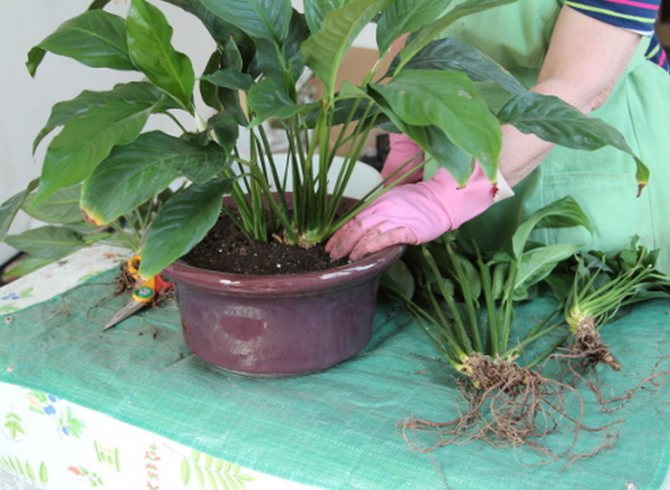

The composition of the soil for spathiphyllum and the choice of dishes:
- turf land - 2 volumes;
- leaf, peat, sand - 1 volume each;
- ceramic chips, charcoal, bark - 0.5 volume each.
You will need pebbles or expanded clay for the drainage layer in the planter. The created soil must be steamed, treated with phytosporin. To restore useful microflora, 2 weeks before planting, moisten the mixture with EM-1 and place in a dark place.
For transplanting an adult plant, a container is selected that is larger than the previous pot by one size or 1-2 cm.It should be borne in mind that painless transshipment is carried out up to a container diameter of 20 cm, later they try to remove the upper loose layer and add fresh nutrient mixture. Root tightness is a must for flowering. A sign of the necessary change of dishes is a beard of yellow roots of spathiphyllum, which has crawled out of the drainage hole.
Indoor flowers live constantly in conditions that only remotely resemble natural ones. Therefore, the decorativeness of a plant depends on many factors.
Spathiphyllum transplant is a mandatory technique in captivity. The root system requires nutrition, and in a cramped bowl, light, infertile soil is unable to feed the plant for a long period.
When transplanting a plant and reproducing it, certain rules must be followed.
One of the most beautiful and popular flowers is Spathiphyllum. He is not whimsical in leaving, but it is worth knowing how to transplant spathiphyllum at home correctly. Flowers in people's homes create a special atmosphere and are a part of living nature in human everyday life, in addition, they can bring good luck and well-being to their owners.
This is what this flower is considered to be; the people call it "Women's Happiness". There is a belief that he brings good luck and love to those who properly care for him. He loves the energy of one person, therefore, he should have one mistress.
In fact, it is very beautiful and original, its large single petal has a teardrop shape, and a yellow pistil is vertically located in the center, it seems to be a continuation of the stem, but it has a more juicy color and is covered with small balls.
Its appearance will not leave anyone indifferent, it will interest you with its unusual and at the same time very simple beauty.
He is unpretentious in care. The main thing is to act according to the rules and be attentive to the slightest changes in the appearance of the plant itself or the soil. Competent transplantation of this flower is the key to its further growth and flowering. It is worthwhile to familiarize yourself in advance with how the transplantation and care at home for this plant is carried out.
If the flower was donated or purchased independently in a flower shop, then it is worth giving it 10 days to adapt and see how it feels in a new place. There are several nuances:
- The place for the plant should be chosen correctly. The southern and northern sides of the house are more suitable for him. Lighting for such indoor plants should be diffused, they do not tolerate direct sunlight, such delicate and thin petals can get burns from the sun.
- You should not place pots with a plant near heating devices: from streams of warm air, the appearance of the flower deteriorates and it can disappear.
The first transplant is carried out immediately after purchase. As it was said, initially he is given several weeks to adapt, and then he is planted in a larger pot. Many people wonder why it should be done immediately after purchase.
The fact is that for sale the plants are planted in small pots, where the root system quickly fills the free space and all forces are redirected to flowering.
In addition, special stimulants and plant nutrition are actively used in flower salons, which allow them to keep their presentation as long as possible.
Therefore, the flower needs a more spacious pot and it needs a cleaner soil without stimulants. The last condition must be met in order for the plant to be able to rest and enter its normal natural mode of existence.
Preparing the soil
Before replanting the plant, you need to prepare the soil and a new pot. Transplanting into a more spacious container is necessary primarily for the root system. Not everyone knows which pot to choose.
If you take it too spacious, then the flower will spend all its strength and energy on the development of its roots. As a result, lack of flowering and slow growth. In a shallower pot, it will feel cramped and the roots will start to get damaged.
To avoid mistakes, when transplanting, you always need a capacity 2 more fingers of the previous one. Moreover, it should not be too wide.
Forced transplant
Soil preparation is one of the most important points, because it is the soil that provides the necessary nutrition and a suitable environment for active growth. Flower Women's happiness loves slightly acidic soil, so it will not be difficult to create it yourself, the main thing is to correctly combine the necessary substances. Prepare the soil for spathiphyllum as follows:
- Coarse sand and peat are taken in 1 part.
- Leafy land - 1 part.
- Sod land - 2 parts.
- Charcoal and spruce writhing 0.5 parts each.
- It is imperative to use drainage; ceramic chips or expanded clay are well suited for this.
A drainage layer is lined at the bottom of the pot, and the rest of the components must be thoroughly mixed in a separate container. Then you can fill her pot for spathiphyllum.
You can purchase the necessary primer in the store, but the purchased material may not contain all of the listed components. In this case, you can supplement it with the necessary substances yourself.
The soil for the plant should be loose and airy, it is such a soil that is required in order for the transplant to be successful.
Transplant process
The workplace should be covered with polyethylene, and gloves should be prepared for the hands, you will also need a small scoop and a watering can with water, a pruner.
To begin with, a drainage layer 2-3 cm high is lined at the bottom of the pot for indoor plants.Next, the container is filled with soil, but not to the brim - it is worth leaving about 3 cm free. To remove a plant from an old pot, you need to slightly moisten the soil.
Why is a houseplant without flowers a reason
When flowering, the plant produces a long-stemmed bud (40-50 cm). The inflorescence resembles an ear. The beauty of the flower is given by the white leaves covering the ear. Over time, they turn green and turn into ordinary leaves. Usually the plant blooms in spring, but subject to keeping conditions it can bloom 2 times a year.
Sometimes home spathiphyllum grows, forms a fluffy bush, but does not release flowers. It is necessary to check the condition of its maintenance, make sure it is properly maintained, increase humidity, ensure regular watering 2 times a week and fertilization.
If all the conditions are met correctly, you can rearrange the plant to another place. Preferably with an inflow of fresh air (not in winter). The lowered temperature at night provokes flowering. The flower will not bloom if the pot is not selected correctly. The pot requirements are described above. If this condition is not met, it is necessary to carry out a transplant.
Spathiphyllum can be induced to bloom by stressing it. To do this, do not water for several days. Then transfer to a cool place for 2-3 days. Then put the flower in its original place, continuing the usual care, and wait for flowering.
How to choose the right time for a transplant
The best time for a planned spathiphyllum transplant is spring. Changing the soil mixture will give the plant new nutrients, the roots will quickly gain their mass, and buds will begin to form. Overgrown bushes are also planted during this period.
The green islet of spathiphyllum with graceful leaves and white bracts needs replanting from time to time. Replacing the substrate and feeding have a beneficial effect on the development of the indoor plant and stimulate a new wave of flowering.
Why there is a need to transplant spathiphyllum
The plant grows well if there is sufficient space for the roots. A spathiphyllum transplant at home is carried out in such cases:
- the bush has just been bought and is in a small pot;
- regularly every 3-5 years in the spring to ensure development, since the bush grows quickly, and the roots intertwine, twine around the entire substrate, stick out to the surface;
- if the lower leaves inside the bush dry up;
- for reproduction, choosing from the bundle a fragment where there is a growth point and roots.
There is another important reason when you need to think about how to transplant spathiphyllum faster: in the absence of flowering.
Additional Information. Transplanting is not necessary if the tops of the leaves turn yellow. This is a sign that the air in the room is too dry for spathiphyllum.
Transplant - step by step instructions
Shake the pot lightly and carefully remove the spathiphyllum from it along with the lump of soil. Help with a garden scoop. The soil can be moistened with plenty of water, so it will be easier to remove.
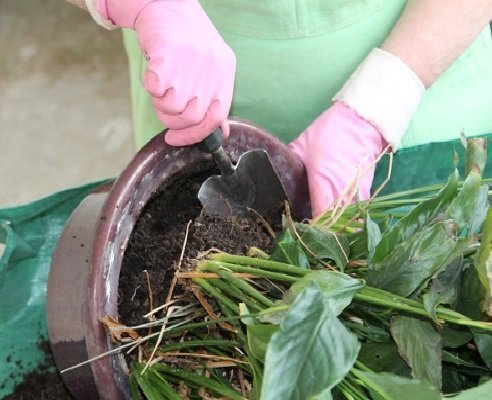

Remove the clod plant from the pot
The roots of an adult plant should tightly braid a lump of soil and occupy the entire pot. At this stage of development, the plant blooms profusely. Do not choose a pot that is too large and tall for transplanting, which is much larger than the previous one. The bloom of spathiphyllum will not come until the root system again occupies the entire space of the pot. It is better to choose a low container with a diameter of 15–20 cm.
What do you need to prepare in advance?
It is advisable to stock up on all the necessary equipment in advance. It is necessary to prepare a small pot with a large diameter, which must be thoroughly washed and rinsed with boiling water for disinfection. You will also need pruning shears, duck and rubber gloves (optional).
screenshot_11.jpg


For good health, spathiphyllum needs a loose, slightly acidic earth.When buying ready-made soil, you should give preference to a universal soil mixture for aroid or tropical plants, sand must be mixed in. Self-cooking is also not a difficult procedure. It is necessary to combine a portion of leafy earth with two parts of turf, add a portion of peat and one part of sand. The addition of charcoal will enhance the antibacterial properties of the mixture, and brick chips will create drainage. Superphosphate will enrich the soil with minerals.
screenshot_10.jpg
